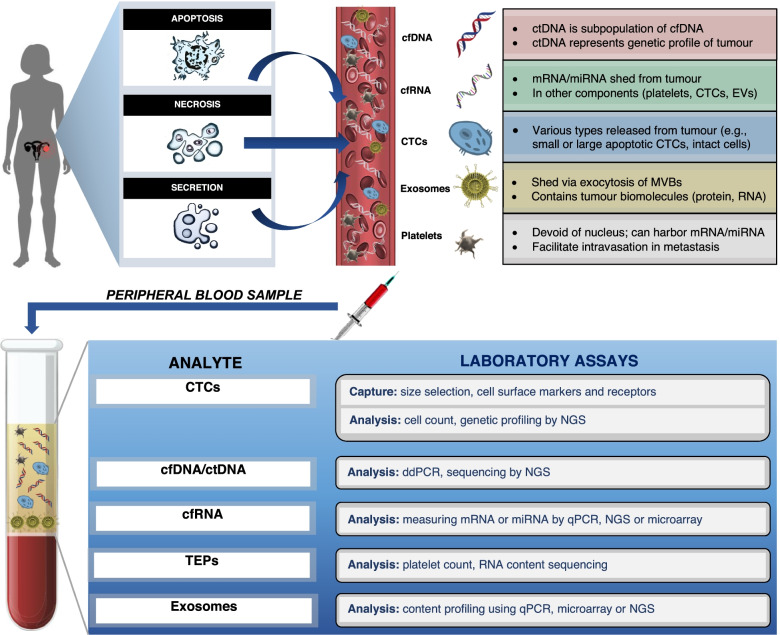Fig. 2.
Overview of the liquid biopsy process, from hypothesized mechanisms of tumour release of liquid biopsy components, to laboratory analysis techniques. Tumour biomarkers are first released and enter the circulation via one of three main mechanisms: apoptosis, necrosis, or secretion. Liquid biopsy involves the collection and analysis of five distinctive tumour components from peripheral blood samples: cell-free nucleic acids (cfDNA/ctDNA, cfRNA), CTCs, exosomes and tumour educated platelets. Tumour components in peripheral blood samples are then captured and analyzed using their corresponding laboratory assays. cfDNA: circulating free DNA, ctDNA: circulating tumour DNA, cfRNA: cell-free RNA, CTCs: circulating tumour cells, TEPs: tumour educated platelets, NGS: next generation sequencing, qPCR: quantitative polymerase chain reaction

